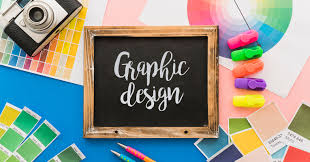
6 Factors Of Academic Achievement To Guide Your Teaching
What are the factors of academic achievement?
First, a definition for academics in the classroom. An academic classroom is one where the primary goal is to promote proficiency of academic standards. Everything else, while appreciated and winked at, comes after. The class, curriculum, and instruction, by design, are built to move students in their academic achievement.
If that’s your goal, what might your focuses be? What’s important? What matters? Let’s take a look at six important factors at work here.
6 Factors Of Academic Achievement To Guide Your Teaching
1. Instructional Design Quality
While there are countless factors in the academic achievement of a student, few are more powerful than instructional design.
This is a topic for an entire book or a post of its own. But just consider that the ‘understanding’ is in large part a product of design and that starts with the most macro elements of all: what is being studied (curriculum), how it is sequenced (curriculum maps, for example), and how each are designed to maximize learning opportunities.
I’ll write more about this soon.
2. Accuracy & Alignment
Accurately unpacking the standard–-not oversimplifying it, nor making it more complex than it has to be. Making sense of what the standard says, and understanding exactly what the student needs to know and be able to do to get there.
Accurately acknowledging the rigor of the standard–accurately, which means what it says, not what you think it should be. The standards describe a minimal level of proficiency–feel free to push students above and beyond, but not until they’ve mastered the language described in the standard.
Consider Using: Your PLN. Collaboration with other teachers is critical, and not necessarily through a formal 9-step PLC process, but conversationally, over time trying to make better sense of what the standards both say and imply.
Alignment between student practice with the standard. The work students do throughout the year shouldn’t merely ‘engage’ students or ‘push them to think, make, or create.’
Those things are great, but if there isn’t alignment between the practice and the standard, the mastery isn’t going to show because what the students aren’t mastering the standard, but rather thinking, making, and creating. Understanding by Design’s Backwards Planning makes a lot of sense here. As in, do it.
Alignment between student readiness and the academic standard. Think the Zone of Proximal Development. It does no good to create ‘rigorous’ work for the student who lacks the background knowledge, content knowledge, or literacy to perform the work while you browbeat them to ‘meet your expectation.’
Meet the student where they are implies exactly that. Meet them, then move them.
Consider Using: Understand by Design, especially Backward Planning thinking.
3. Data Forms & Quality
A climate of assessment and ways to measure understanding provide usable data that teachers can grab-and-use to revise planned instruction. Fresh, trustworthy, and relevant data teachers can use and students can understand to let them know what should come next. If it doesn’t answer that question–what now?–it’s an assessment of narrow value.
Data as in, units, lessons, and activities are designed to flexibly respond to that data in authentic ways without leaving it all on the teacher’s shoulders to do so on the fly–or, worse, at the local “data team” meeting.
Consider Using: Exit-Slip Teaching (we’re working on a model that might help here), technology that can help aggregate and report usable data consistently.
4. Whole Literacy
Literacy in terms of being able to read a variety of texts both critically and holistically. To be able to decode grade level texts of appropriate complexity, and to then be able to take that text apart in terms of ideas, evidence, theme, and craft.
And further, ‘whole’ literacy, as in being able to write clearly and eloquently about what is read, learned, and thought across physical and digital forms, for a variety of audiences and purposes. In short, to be able to seamlessly use the writing process to create and refine arguments and narrate experiences for both academic and authentic purposes.
Consider using: RAFT assignments
5. Student Motivation & Engagement
Student effort as in, helping students developing intrinsic motivation.
Student effort as in, supporting students emotionally, metacognitively, and intellectually to give themselves to the process of mastering academic content.
Student effort is everything. Teaching with engagement is like tweeting constantly with zero followers. Singing to an empty stadium. Dancing alone in the dark. We often use words and phrases like student engagement, student-centeredness, curiosity, and so on–and all of these are great. But a motivated student with zero technology, limited resources, and even a novice teacher will perform light years better than an apathetic student in a ’21st-century classroom.’
Consider Using: Consistent learning feedback that makes sense to students; positive reinforcement; clear indicators of progress for students (think about video games, which constantly clarify yes/no, good/bad, warmer/colder to students); also, think gamification–points, levels, badges, unlocks, etc; lots of ‘voice’ and choice; also, work within their ZPD that feels designed for them specifically will carry more weight than one-size-fits-all-do-it-because-I-said so; “Teaching What Matters Most” by Silver, Strong, and Perini is a great resource as well.
6. Depth Of Knowledge
One Last Thing
One indicator that the above is working? Self-Initiated Transfer.
Self-Initiated transfer is a key indicator of understanding. It can be defined here as the ability to transfer knowledge or skill to a new and unfamiliar context, preferably unprompted. Put another way, students who know what to use what knowledge, when without being told to do so.
Refrence/Credit- Teach thought,
Written By- Terry Heick
Founder & Director of TeachThought, humanist, technologist, futurist, failed philosopher, macro thinker extraordinaire.



















[…] that there are two types for the IELTS exam, one is the general. Best exam and the other one is the academic-based exam. Since you are a student and you will be going for studying abroad at a university, then you can go […]